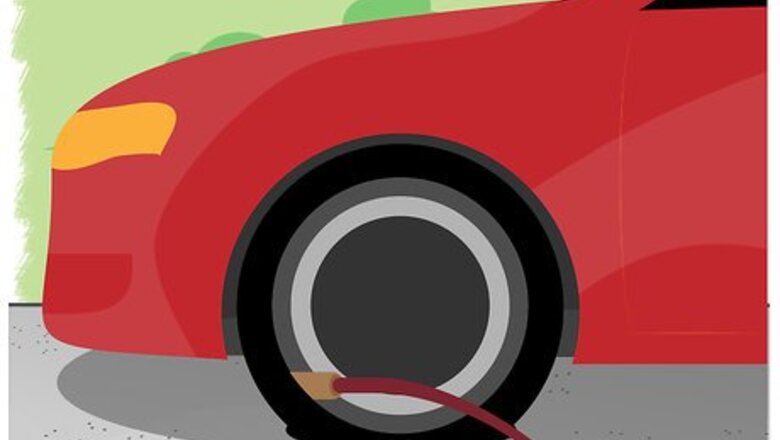
views
The strategies for hypermiling are different depending on whether you're driving a gas powered car versus a hybrid versus a plug-in hybrid or purely electric powered vehicle. Some of the suggestions below may not apply depending on the type of vehicle you're driving.
- Make sure your car and tires are well-maintained and clear any unnecessary items out of the trunk that might be weighing your car down.
- Be gentle with your car’s accelerator, coast as much as you can, maintain a steady speed while driving, and avoid idling.
- Only use your air conditioner on the freeway by cycling it on and off as needed, and plan your route for best fuel efficiency.
Setting Your Car Up For Hypermiling
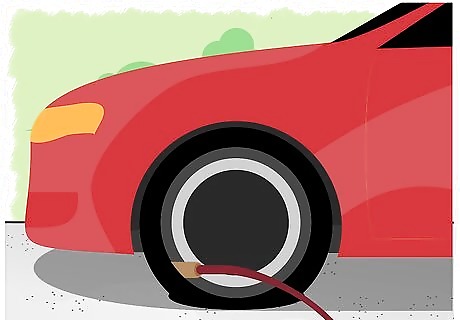
Maintain your car for hypermiling. Poorly maintained or out of tune cars are a significant source of pollution. These driving techniques won't work if you don't properly maintain your car, which you should do whether you're hypermiling or not: Keep your car tuned up. Out of tune cars are more inefficient and produce more pollution. A regular schedule of maintenance for you car is the first step to even having a car you can hyper-mile with. Use high performance spark plugs. High performance spark plugs like iridium-tipped "performance" spark plugs create a larger combustion spark which contributes to fuller, more efficient burn in the combustion chamber. This provides slightly more power, better fuel efficiency and lower emissions. Use the lowest viscosity oil that is recommended by the manufacturer. Using anything lower than what is recommended can be unsafe. If the car is not "taking oil" - burning it or leaking - switch to synthetic oil (and ATF), as those greatly reduce internal powertrain friction, improve mileage and longevity. At the same time, oil changes can be done much less frequently, thus compensating for higher oil cost. Consider using very lightweight 0W-20 motor oil. Lightweight motor oil reduces the amount of work your engine has to do since it's easier to pump. Using 0W-20 motor oil can help to increase the engine's mileage, but at the expense of potentially reducing engine life.
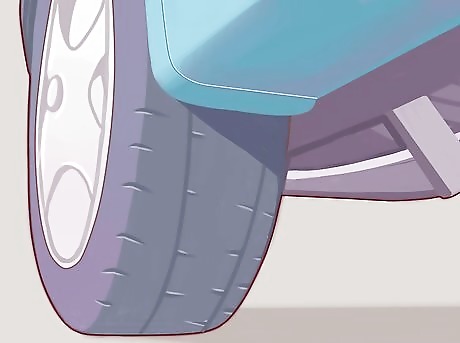
Maintain your tires and wheels for hypermiling. Correctly maintained tires are very important to hypermiling - they're the only way that your car touches the road, and incorrectly maintained tires can cause significant fuel inefficiency. Align and balance the wheels. Car wheels are sometimes worn down unevenly or weighted or aligned very slightly off-center, which reduces efficiency. Check tire pressure regularly. If the tires are incorrectly inflated, then there will be excess drag, or insufficient surface contact with the road, causing significant decreases in fuel efficiency. Don't over-inflate tires to increase rolling or coasting distance. This can lead to increased wear and loss of traction. In extreme cases the tires may pop causing a catastrophic accident. Make sure you have clean headlights and that they are working properly. For many hypermiling techniques you'll be varying your following distance from cars. Seeing the car in front of you is vital for safety as well as for efficiency.
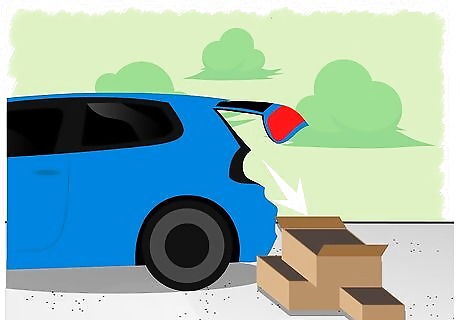
Take stuff out of your car. Get rid of the "junk in the trunk" — the more weight you're carrying, the more the engine and drive-train have to work. Removing extra weight increases efficiency. Don't remove stuff from the trunk you might well need! A percent or two mileage decrease is much better in both time and fuel than a long, otherwise unnecessary trip to the mechanic because you took the spare tire and tire changing kit out of your car.
Driving Safely and Efficiently
Minimize load on your engine. Generally, it's better for your fuel economy if you maintain a steady speed, which is why using cruise control and driving at or below the speed limit is an important part of hypermiling. However, varying your speed in relation to the actual terrain you're driving over is also necessary. Cars are designed to have fuel efficiency and align with community standards for speed limits. You can save gas and maintain your car better by driving at a safe and appropriate speed for the driving conditions. Speeding can burn more gas and requires you to stop and start frequently, which puts extra wear on your brakes.
Drive as if you don't have brakes — coast as much as possible. When you're driving plan a path that doesn't require braking followed by a sudden start. Careful coasting can reduce your gas usage so much that acceleration won't even cause a hiccup in your cruising mpg. On newer cars if the car is in gear and your foot is off the accelerator, the injectors shut off completely, creating essentially "free" mileage — your car's going but you're not using gas beyond a small amount for engine braking, or the engine's resistance to your costing. Don't coast by disengaging the clutch and/or putting the car in neutral. This will cause the engine to go into idle which uses up more gas than simply leaving the car in gear and letting it coast along with minimal engine input.
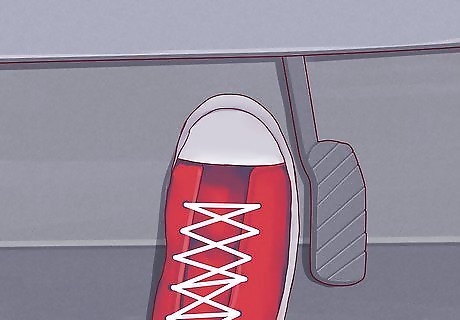
Be careful to coast safely. Coasting can can be frustrating and difficult if other drivers keep cutting in front of you. Use basic safety techniques and common sense to keep your coasting safe. Keep your foot ready to use the brake. If you do need to stop suddenly you should be able to react quickly. Since you're using the accelerator as little as possible, braking or not braking is your primary means of controlling your speed. Obeying traffic laws is more important than saving gas. This is true from a cost:benefit perspective as well as just plain common sense. After all, if you have to pay a $500 ticket for coasting right through a stop sign and another $2,000 per year in increased insurance premiums after getting into an accident while hypermiling, you've basically eaten all the savings you created by hypermiling in the first place.

Be gentle with the accelerator. The 'accelerator' is so named because it pushes more fuel into the engine, making it run faster — and also lowering your fuel economy and increasing your output of pollutants. Go gentle on the accelerator and you'll see savings in your gas bill. Push the pedal down slowly, and lift it up as soon as you know you're going to need to stop (when you see a red light, a stop sign, or brake lights from the car ahead of you) so that you can coast the rest of the way. When hypermiling, you should never need to push down the pedal by more than an inch (2.5cm). Some recent cars may in fact have pedals that "push back" when you're accelerating too aggressively.
If you do have to accelerate, get it over with quickly. Fuel efficient vehicles actually generate better gas mileage when a "brisk" acceleration method is used. Slow acceleration will yield less mileage on such highly efficient cars. But any acceleration makes for terrible mileage, so get the acceleration out of the way so that you can cruise (excellent mileage!)
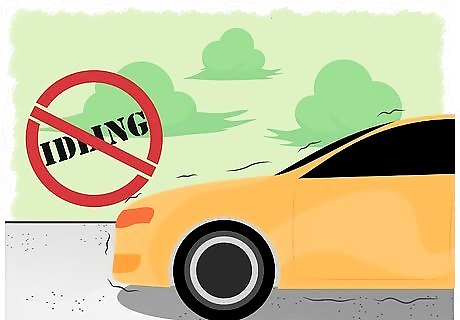
Avoid idling. Most people waste a significant amount of gas simply sitting in traffic or at a stop sign, not going anywhere. Turning off the engine when you stop for more than one minute can improve fuel efficiency by 19%. In cold weather, letting your car idle to warm up reduces fuel economy and creates additional pollution; all you need to do is drive gently for 5-10 minutes. If you're following the previous two steps, you're going to be driving gently all the way anyway, so you may as well use that for your engine's warmup.
"Pulse and glide" in a hybrid to save fuel. Pulse and glide is a technique that can dramatically increase your mileage, but is best when you are on a road where there are few other people around. "Pulse" or accelerate up to a speed that is the higher end of a range of speeds that are appropriate. Do this using one of the sweet spots for mileage/power ratio on your car. For the Prius these spots are ~15 mph (24 km/h) and 25 mph (40 km/h), and correspond to times at which the gas engine is powering the car and charging the battery. "Glide" between periods of acceleration, but use the accelerator to provide electric assist. This requires knowing how hard to push and in which circumstances. Use your car's consumption screen to provide feedback. Get used to the maximum electric assist you can use and you'll go further between pulses, further increasing your mileage.
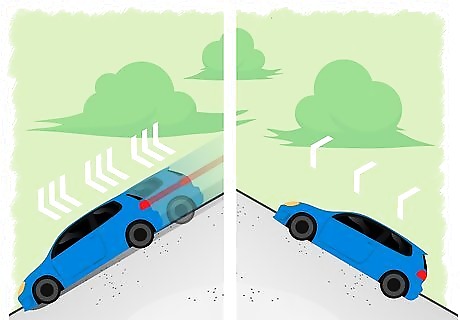
Use hills to your advantage. Generally, this means you should go slower up hills, and faster down hills. Going uphill slower helps prevent wasting more gas than is necessary to get up the hill. Going downhill faster uses less gas and produces valuable momentum that you can use instead of engine power. If you combine the two in areas with small hills, you'll see much higher mileage. While going downhill, you can go faster using less gas. As such, don't lay off the pedal completely — use it until you're going a little faster than normal. Use every downhill slope to your advantage. For instance, when coming down a hill and faced with a red light at the bottom (where it levels out), try to stop well before the light so that you can use the remaining downhill slope to your advantage when you need to move again. Avoid stopping on an incline heading upwards. Starting from a dead stop on a hill is the worst scenario in terms of fuel economy — your engine is fighting the weight of the car, plus the car's acceleration downhill from gravity. Stop at the top of the hill, or stop before you climb the hill when safe to do so.
When possible, consider drafting off larger vehicles. Cars create a wake of disrupted, lower-density air behind them as they drive. Drafting is driving through this area of disrupted air — it is much more aerodynamically efficient than simply bulling through still air. This is a controversial practice, and you should carefully consider whether you want to do this. Be extremely careful when drafting. You may find yourself focusing on the car you are drafting off rather than the road in front of you. Maintain a safe distance when drafting and keep aware of surrounding traffic. Drafting off of tractor trailers is not efficient. Drafting off a tractor trailer or "big rig" in hopes of cutting wind resistance is usually not worth it. At best, staying 2 seconds behind the truck (176 feet at 60 mph) from the rear of the trailer results in fuel savings of less than 10%. Drafting off of tractor trailers can be very dangerous. The distance needed to get more substantial savings is too close for safety. Trucks are extremely heavy, with corresponding handling challenges — the safest place to be in relation to one is simply anywhere but next to it. The rear end of a truck is often fairly high, so a small car can strike too high on the car's body to absorb a collision safely, and a tire blowout while tailgating can throw a truck tire tread at your windshield, passing through your windshield and resulting in severe injury or even death. Trailer and truck tires also often throw pebbles and other road debris that can result in serious damage to your car.
Climate Control While Hypermiling
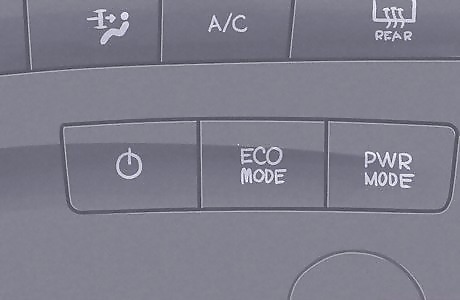
Limit your air conditioner use to the freeway. Air conditioners consume a lot of energy to extract the heat from air, siphoning off up to a few miles per gallon. However, opening the windows creates aerodynamic drag, disrupting the flow of air across the car, which can also reduce efficiency. For this reason, using the air conditioner really only makes sense when it's cheaper than the increase in drag from just opening your windows. The air conditioner is typically more efficient than open windows at high speeds over about 45 mph (72 km/h). The climate control system's ventilation fan, without AC, uses negligible energy but can be weak and carry in some engine heat. For the best of both worlds - quiet, cooling, and a breeze - within reason, adjust the window openings to direct air from a little opening into an efficient crossflow or brisk vortex. While there is some debate between using air conditioning and opening the windows, hardcore hypermilers simply bring ice water in the car with them so they can stay cool with the windows closed and the AC off. Auto A/C systems work most efficiently while set on the coldest temperature with the lowest fan speed.
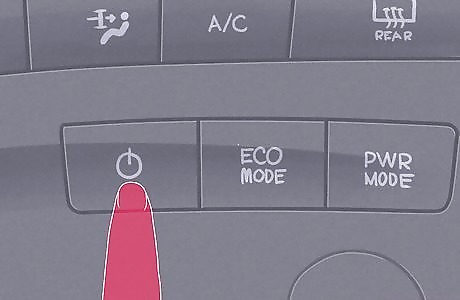
Cycle your air conditioner to maximize efficiency. If you live in a hot climate where you simply must use the air conditioner, try cycling it on and off rather than keeping it on all the time. With the air conditioner off and the fan blowing, the air will continue to blow cool air for several minutes. When the air begins to get warm, turn the air conditioner back on for a few minutes until the air is cool again, and again turn off the air conditioner. The effectiveness of cycling your air conditioner will depend on your model of car. In some cars, the air conditioner can run at variable strengths, and may be used less intensively by the fan and air mix when turned down. Beware of continually adjusting climate control systems, especially those with lots of electronic controls or a thermostat rather than simple fan speed settings and stiff dials to adjust fan speed. Servos deep within the car can die and take a lot of labor to replace. Regular gas (and other internal-combustion) cars' engines make plenty of "waste" heat, so use the heater all you like.
If you drive a convertible, keep your convertible top closed, especially on the freeway. While opening a convertible, as convertible owners may argue, is basically the entire point of having a convertible, lowering your convertible top significantly decreases your fuel efficiency. The large, open cavity in the car created by the car's open cabin creates a significant amount of drag that makes the car work harder to push against more air as it drives.
Planning and Thinking for Hypermiling
Plan your route for fuel efficiency. If you have a choice between various routes, go for the one with the least number of stops - stopping and starting again from a dead stop is very expensive in terms of gas. If you have multiple stops in one trip, plan it so that you go to your furthest destination first and make the rest of your stops on your way back. By taking your longest drive at the beginning, you give the car enough time to warm up for the remainder of the trip; if you took the short trips first, your car would take longer to warm up (because of the brevity of each trip). Since engines do not operate efficiently until they are warm, taking your longest drive first increases fuel efficiency. Country roads are good because you don't have to stop (and go) as much and you don't have to accelerate/brake to get on/off (like with the highway). Steep uphills or downhills will have impacts on your fuel economy as well. If you're driving on sloped roads, it's useful to think about where you should come to a full stop, because that will affect how hard you need to accelerate.
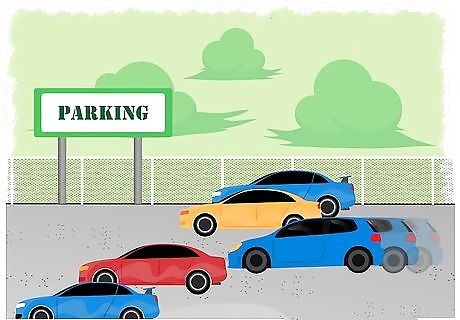
Park for easy departure. Instead of searching for the perfect spot close to an entrance (which will involve stop-and-go driving, especially with pedestrians involved and other drivers pulling in or out of their spots) pull into a spot that's further away from the entrance. Look for the parking spot with the highest elevation and park face-out so that when you start the car and the engine is cold (at the lowest efficiency) you can use gravity in your favor without having to spin your car around.












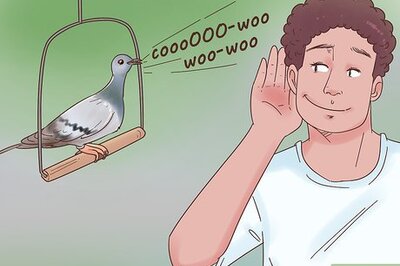

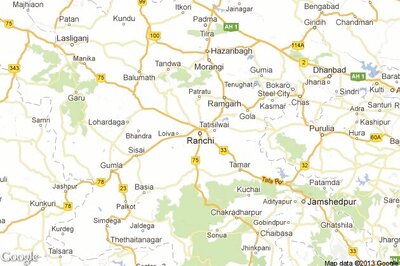
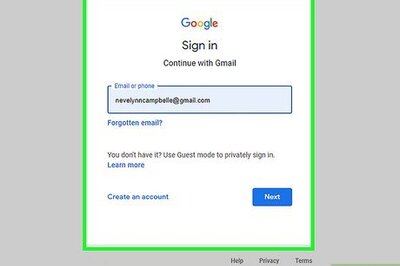




Comments
0 comment